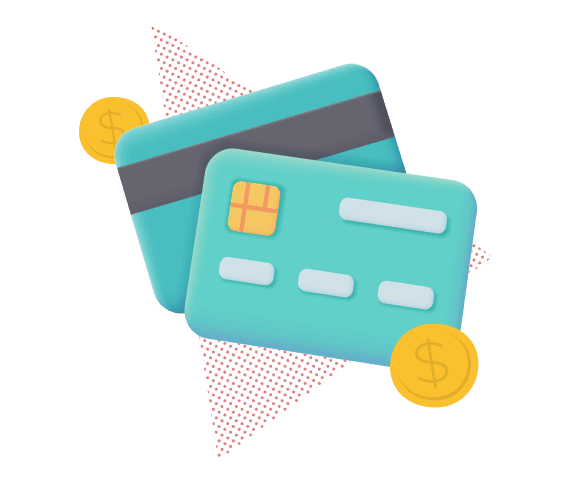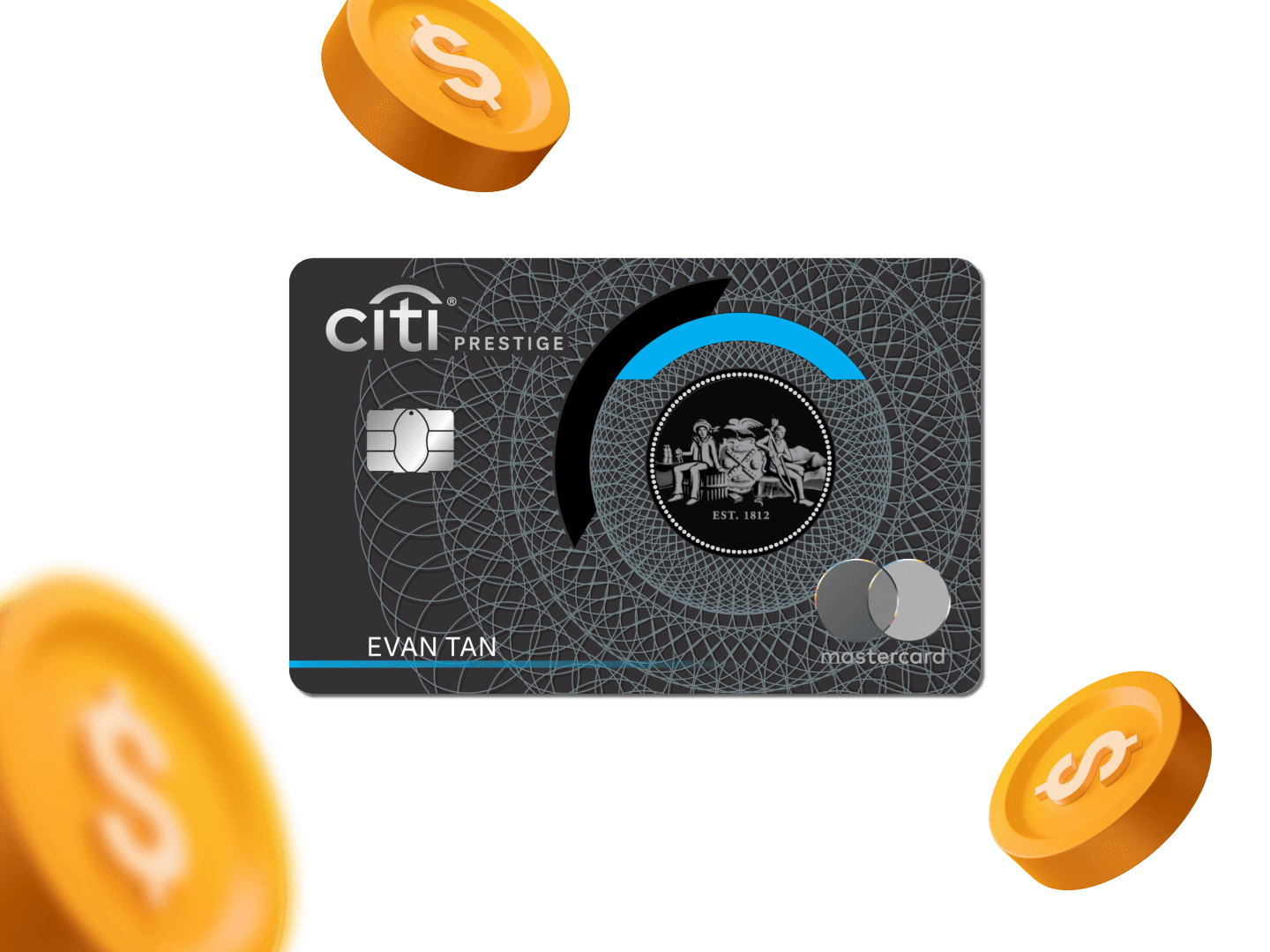How Credit Card Issuers Calculate Minimum Payments
Updated: 12 Dec 2025
Your minimum payment is just a small slice of your balance — enough to keep your account active, but not enough to wipe out your debt. To clear what you owe faster and save on interest, aim to pay more than the minimum each month.
The truth is, your credit card minimum payment depends largely on how much you owe. Most card issuers use a simple formula — either a small percentage of your outstanding balance or a flat minimum amount, whichever is higher.
Here’s a quick breakdown:
If your balance is high (say, above S$1,000), your minimum credit card payment is usually calculated as a small percentage of your total amount owed — commonly around 3%.
If your balance is somewhere in the middle (e.g., S$50 to S$1,000), you might be charged a fixed minimum, such as S$50, regardless of the percentage.
If your balance is very low (below the fixed floor amount), you’ll typically be asked to pay the full balance — no more, no less.
If your payment due seems to jump around from month to month, it’s likely based on one of these calculation methods. Understanding how credit card minimum due is calculated can help you avoid surprises and plan your repayments more effectively.
In this guide, we’ll walk you through how minimum payment is calculated on credit card bills, what else can influence that number, and why paying more than the minimum can save you a lot in interest over time.
Wondering which credit card is best for your needs?
We’ve reviewed the top credit cards in Singapore — so you don’t have to.
✨Get the Apple Upgrade You Deserve✨
Get your dream Apple gadget when you apply for select Citi, HSBC, OCBC, or Standard Chartered credit cards via SingSaver and top up as low as S$240! Valid till 5 January 2026. T&Cs apply.
How your credit card minimum is worked out
A minimum credit card payment is the lowest amount you must pay by the due date to keep your account in good standing. Miss it, and you risk late fees, higher interest rates, or even a hit to your credit score if the delay goes beyond 30 days.
Minimum payments can be helpful in a pinch, such as when you're between paycheques or facing an unexpected expense. But relying on them month after month can be risky. That’s because these payments are often just high enough to cover the interest, meaning your actual debt barely shrinks. Left unchecked, this can stretch repayment across years and cost you far more in interest over time.
So, how is your minimum credit card payment determined?
While each bank in Singapore may use a slightly different formula, most issuers fall into one of two camps:
-
A flat percentage of your outstanding balance
-
A calculation that includes a percentage of your balance, plus interest and applicable fees
Let’s break down both methods so you can better understand how credit card minimum due is calculated — and what that means for your wallet.
Saver-savvy tip
Most credit cards in Singapore charge interest of around 25% per annum, and it’s compounded daily. That means even small balances can snowball fast if left unpaid. Paying off your full balance each month is the best way to avoid these charges entirely.
Flat percentage
This method uses a fixed percentage of your outstanding balance, typically around 3% in Singapore, as your minimum credit card payment.
It’s simple and predictable, which makes it easy to anticipate how much you’ll owe. However, this payment might not always be enough to cover your interest charges, especially if your balance is large or your interest rate is high.
Example:
If your card has a balance of S$5,000 and your bank charges a 3% minimum:
S$5,000 × 3% = S$150 minimum payment
This means even if you don’t make any new purchases, it could take years to clear your balance — and cost you hundreds in interest — if you stick to paying only the minimum.
Percentage + interest + fees
Some credit card issuers use a more layered approach when calculating your minimum credit card payment. This method adds up three key components:
A small percentage of your balance (commonly 1%)
Any interest charged during the statement period
Additional fees, such as late payment or over-limit charges
This is a method often used by larger banks, and it ensures you’re at least covering the interest and fees, which helps slow the growth of your debt, even if you’re not paying much of the principal.
Here’s how it works:
Let’s say:
Your balance (excluding interest and fees) is S$5,000
You’ve been charged S$125 in interest
You’ve incurred S$40 in late fees
Your issuer charges 1% of the principal
Step 1:
S$5,000 × 1% = S$50
Step 2:
S$50 + S$125 (interest) + S$40 (fees) = S$215 minimum payment
This approach often results in a higher minimum than a flat-rate method, but it also better protects you from having your balance spiral out of control.
SingSaver x Citi Prestige Card Exclusive Offer
Get S$480 Cash, a 2D1N - Sofitel City Centre Staycation Package, Sony Headphones, or an Apple Watch Series 11 when you apply for a Citi Prestige Credit Card via SingSaver and spend a minimum of S$500 within 30 days of card approval. Valid till 15 January 2026. T&Cs apply.
What else can impact your minimum payment
Your credit card minimum payment isn’t just about your balance and interest rate — several behind-the-scenes factors can influence what you owe each month.
Fixed minimums: Most issuers have a minimum floor amount, for example, S$50. Even if the calculated payment (based on a percentage) is less than this, you’ll still be required to pay the fixed amount.
Overdue or over-limit amounts: If you’ve missed a previous payment or spent beyond your credit limit, the bank may include those amounts in your next minimum payment to get your account back on track.
Balance transfers or promo interest rates: If you’ve recently taken up a 0% balance transfer or promo interest deal, your minimum credit card payment might temporarily be lower. But don’t let your guard down — once the promotional period ends, your interest (and minimum payment) could spike.
Billing cycle timing: Credit card billing cycles don’t always align with the start of the month. Your minimum payment could vary depending on when your cycle begins and ends, so it’s worth checking your statement dates if you’re tracking your monthly spend.
Lastly, you might wonder why your minimum payment isn’t even lower. That’s due to regulatory safeguards. Banks typically ensure your minimum covers at least the interest charged. Otherwise, you’d fall into what’s known as “negative amortisation” — where your debt grows even if you stop spending.
"Billing cycles often don't start at the beginning of the month. Know when your billing cycle starts and ends before estimating."
Not all credit card billing cycles start on the 1st of the month. If yours begins mid-month — say, on the 12th — your statement and due dates might not align with your payday. Set reminders or automate payments to avoid late fees and keep your credit score intact.
How to check your minimum payment details
If you're unsure how your credit card minimum payment is calculated, your card issuer provides that information — you just need to know where to look.
Start with your monthly statement. It clearly lists your total outstanding balance, the minimum credit card payment due, and when it’s due. It also includes a “Minimum Payment Warning” that outlines how long it would take to pay off your balance if you stick to paying just the minimum each month.
You can also check your online banking portal or mobile app. Most platforms show your minimum payment amount, and some even provide a breakdown of how it’s calculated.
For the full terms, refer to your cardholder agreement — either in the physical welcome kit you received or via your bank’s website. This document spells out how your credit card minimum due is calculated, including interest, fees, and percentage rates.
Still have questions? Reach out to customer service using the number on the back of your card. A representative can walk you through the formula specific to your card.
Why paying more than the minimum matters
Paying only the minimum credit card payment might feel like a relief, especially when cash is tight. After all, it keeps your account in good standing and avoids late fees. But the reality? The less you pay now, the more interest you’ll end up paying later.
That’s because the minimum often just covers your interest and fees, leaving most of your balance untouched. Over time, that adds up and stretches your repayment timeline significantly.
Let’s say you owe S$5,000 at 25% APR.
If you only pay S$150 a month (around 3% of your balance), it could take over 4 years to clear your debt, and you’ll pay more than S$2,500 in interest alone.
So what should you do?
Try to pay as much as you can comfortably afford — ideally, double the minimum payment. If that’s not possible, even adding an extra S$10 or S$20 each month can help reduce your interest charges and shorten the payoff period.
If you need help managing high-interest debt, ask your bank if they can lower your interest rate, consider transferring your balance to a card with a 0% interest promotion or look into credit lines with more favourable terms. This way, you’ll slow the growth of your debt and free up more breathing room in your budget.
Every extra dollar you put toward your balance makes a difference — and gets you closer to becoming debt-free.
>>More: How credit card payments are applied to your balance in Singapore
SingSaver x SCB Smart Credit Card Exclusive Offer
Score exclusive gifts such as Hinomi Q1 Ergonomic Office Chair, Apple AirPods 4, or up to S$250 when you apply for a Standard Chartered Smart Credit Card via SingSaver, spend a minimum of S$800 within 30 days of card approval, and apply for one of these products: EasyPay, Bonus$aver Account, CashOne, or CCFT. Valid till 12 January 2026. T&Cs apply.
Find the best credit card for your lifestyle
Looking to save on interest or rack up more rewards? Compare the top credit cards in Singapore.



